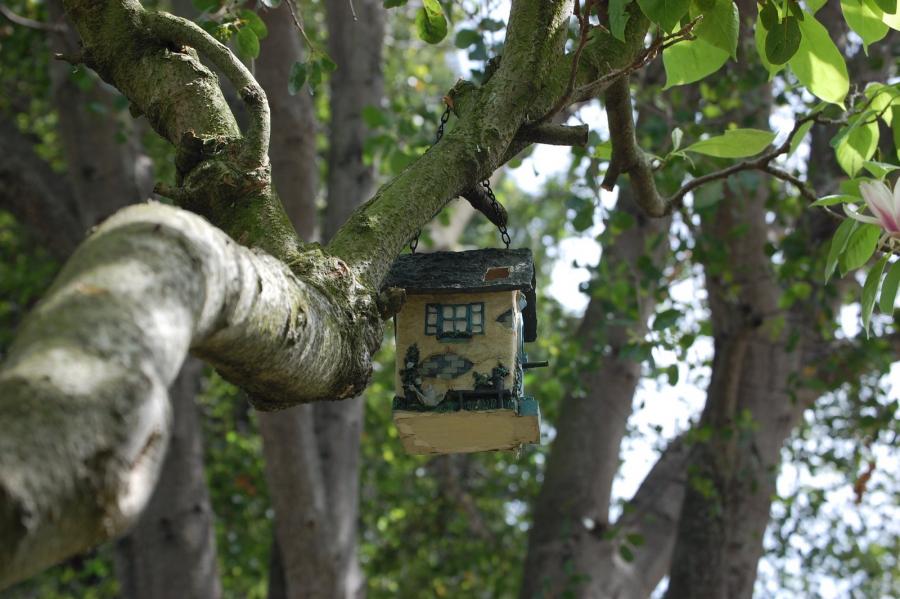Assessing the Health of Trees Around Your Home

To better ensure home safety, it’s important to assess the health of nearby trees. Photo: Ponderosa Tree Service (2013)
You might not realize it, but your home may be a target if it’s bordered by tall trees. Every year, falling trees account for millions of dollars of damages to homes in the United States. For this reason, if you’re unsure about the condition of a tree near your home, it’s a good idea to have its health evaluated. While a DIY examination is no substitute for the expertise of a licensed arborist, there are various signs and symptoms you can look for to assess the health of a tree.
First, look for visible indications of the tree’s overall health. Signs of good health include full growth; vibrant leaves; and strong, contiguous trunk bark. In contrast, signs such as sparse or stunted growth; discolored, withered or spotted leaves; and fragmented or peeling bark may be outward manifestations of ill health.
Second, check the tree for signs of infection or infestation. The presence of “fruiting bodies” such as mushrooms and other external fungal growth may mean the tree is suffering from disease, rot or decay. Additionally, a tree that’s ailing from fungal decay makes an easy target for harmful insects like termites, ants and pine bark beetles. Signs of insect infestation may include fine sawdust shavings and “pitch tubes,” which resemble marble-sized balls of sap. Whether suffering from fungal infection, insect infestation or both, the tree’s condition could go from bad to worse if not treated, and even lead to death.
A third thing to examine is irregularities such as a leaning trunk or multiple trunk joints. Cracked or raised soil, as well as emerging roots opposite a tree’s lean, can indicate the tree is in the process of uprooting. While multiple trunk joints are a common occurrence, connection points should be inspected for weakness. A “U shape” at the crotch evidences a strong connection, but a tight “V shape” can indicate a weak connection with an increased likelihood of splitting.
You can check the condition of a tree yourself, but you should also consider hiring a licensed arborist to perform an inspection. In addition to knowing the signs and symptoms of tree health issues, an arborist will be able to more accurately diagnose a tree and offer solutions. In the end, the minimal fee for professional inspection will be well worth the peace of mind that comes from knowing your home is safe from the danger of falling trees.
Use Diamond Certified Resource to find top rated companies.
Local, Top Rated Diamond Certified Companies Related to Your Topic
Contra Costa County Tree Service Companies
Marin County Tree Service Companies
Santa Clara County Tree Service Companies
Santa Cruz County Tree Service Companies
Sonoma County Tree Service Companies
Related Articles
The Homeowner's Guide to Tree Services
Get Expert Advice From Owners of Top Rated Local Companies
Become a Diamond Certified Preferred Member (Always Free)